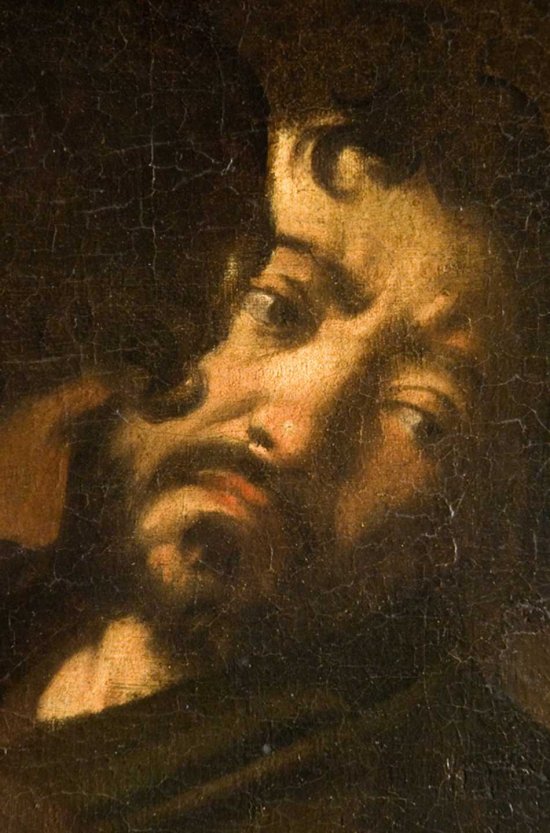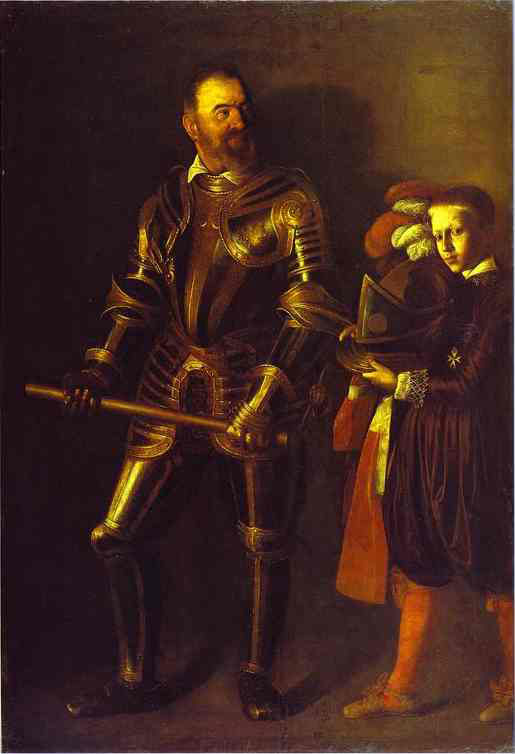Attacks on Caravaggio
Cornelius Sullivan
Not the ones with swords that he dealt with, slanderous lies four hundred and two years after his death. What would he think about the things that are being said about him?

This is a little self published book of no consequence and I should not even respond to it but I am enraged by the bold absurdity of the lies invented just to sell the book. In The Man Who Killed Caravaggio, 2011, the author has, without conscience, accused the Grand Knight of murder, has accused Caravaggio of being a child molester, and has taken away the innocence of the boy. Like the false characterization of Leonardo da Vinci in the Da Vinci Code the lies come from an agenda to attack institutions, beliefs, and individuals. I object to the lies about these artists because they present false portraits of the artists that I know. Calumny is an offence against justice as well as charity.
I had a dream last week that Caravaggio did not die on the beach in Port’Ercole in 1610, he lived and went secretly to
I saw him there in the street, the narrow street, Via del Leone, leading into Piazza San Lorenzo in Lucina, in the Campio Marzio section of the city a block from the Tibre. I told him quickly of the things that were being written about him in my day. He was shocked but not incredulous because he was slandered in his own time as well.
He said, “Set honor in one eye and death in the other and I will look on both indifferently.”

Portrait of Alof de Wignacourt with his Page, oil, 77×53”, 1607, Louvre.
Wignacourt is a man of authority with strength and resolve but not having an austere countenance. There is color in his face and flesh suggesting that he was not devoid of human understanding or completely removed from the world. The boy is self possessed enough to look directly out at the viewer, and consequently the painter as well, with clear eyes without fear. The armor, the plumed helmet, and the page all bespeak the position of the subject. But they are also things for the artist to take delight in painting.
Caravaggio’s biographers like Helen Langdon, John Spike, and Francine Prose, for example, all said that the knights had every opportunity to kill him before 1610 and did not.
Helen Langdon writes, “ …in Rome the art world longed for his return, and the noblest Italian families- the Colonna, the Doria, the Gonzaga, Scipione Borghese – were working to that end.”
Langdon believes that he died from an illness, after being pardoned and trying to return to
He was of a fantastic humour, indeed bizarre,
Pallid of face, and his hair
Thick and curly
His eyes lively, yet deeply sunk…
The great protopainter,
Marvel of art,
Wonder of nature,
Though later a victim of misfortune.
Talking to Caravaggio I continued saying that aside from some good biographies most of the writing from my time goes like this, “We love his art, his life is fascinating, too bad he’s Catholic.”
He said, “How else can I be understood? I lived my time, I drank it deep. They do not love that do not show their love. Beauty itself doth of itself persuade the eyes of men without orator.”
I said, “I have those who have committed calumny against you in a room on this street right beside the Tavern of the Wolf. I am questioning them about their crimes and lies. Would you like to sit in?”
Caravaggio said, “Yes, can I bring my sword?”
I said, “If you wish.”
He said, “Time’s glory is to command contending kings, to unmask falsehood, and bring truth to light.”
I said, “Have you been quoting Shakespeare since we met?”
He said, “Ah, your Inglese bard, you know him well.”
I continued, “There were those who said in a
We have fire flies so they can demonstrate. We have a camera obscura and those who say they know how you used that, will be given a chance to show how. And we have the ones who have profited from selling books with lies about you.”
We went inside. The guard took the lid off the fireflies which unexpectedly flew into the foolish man’s hair and eyes before he could demonstrate. He ran and crashed into the wall, then ran out into the street.
Caravaggio said, “Let him go. Cowards die many times before their death.”
Interrogations continued. Then after some time I said, pointing as if I were in a Caravaggio painting,
“You, stand up.
Then, “Bring in the boy.”
“Young man, were you abused in any way by this painter standing next to me?”
“No sir. He was nice to me and told me stories about these very streets of
Caravaggio took out his sword. The writer hid behind the chair he had been sitting in. I took his little book and held it high then threw it to the ground. The man began to shake. Caravaggio threw a dagger. It pinned the book to the floor.
I woke up wishing that I could talk more with the great artist. He said he was going to show me where he lived and where he worked.
I never could bring myself to read The Da Vinci Code. I was put off by the false characterization of Leonardo, making him not the Leonardo that I knew and liked, but a cranky discontent. There never was an artist who was more disinterested in the workings of the world of politics and religion than he. He did not write about his faith as Michelangelo did. His Last Supper follows the exact same format of many paintings of the subject from that year. Christ in the middle, on one side Peter and his brother Andrew, on the other side, the beloved disciple,
Leonardo was too busy reinventing fresco and inventing the helicopter to be concerned about worldly conspiracies. He did write backwards, it made sense to him being left handed, and he liked the way it looked. He was not secretive, on the contrary, with generosity he shared his life in his notebooks.
I do remember when I told Caravaggio about this he said,
“Leonardo’s faith was in a sense very direct and almost sweet, but never sentimental like some of my Baroque contemporaries. Think of the painting of Saint Jerome in the Wilderness, the unfinished painting in the

Virgin of the Rocks, Leonardo da Vinci, oil on wood, 2 x